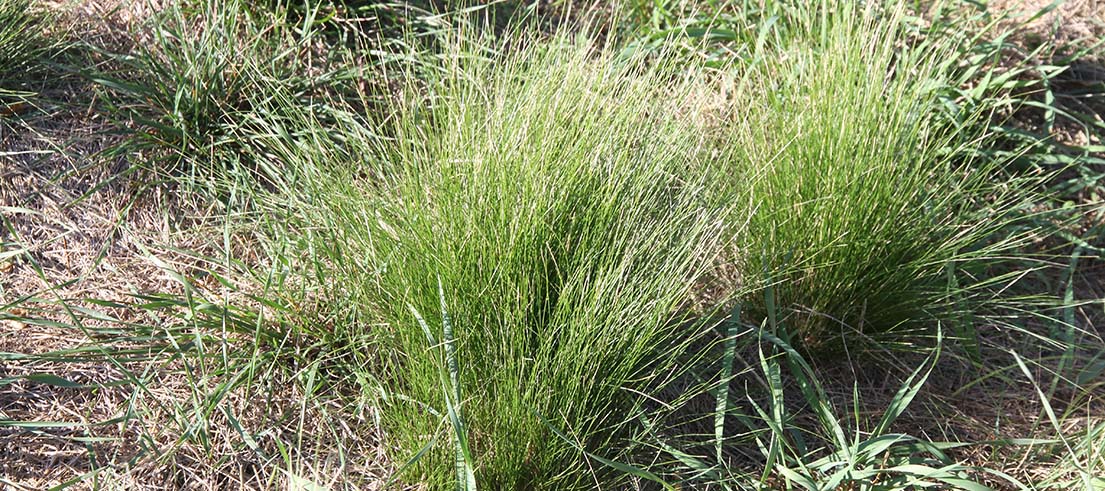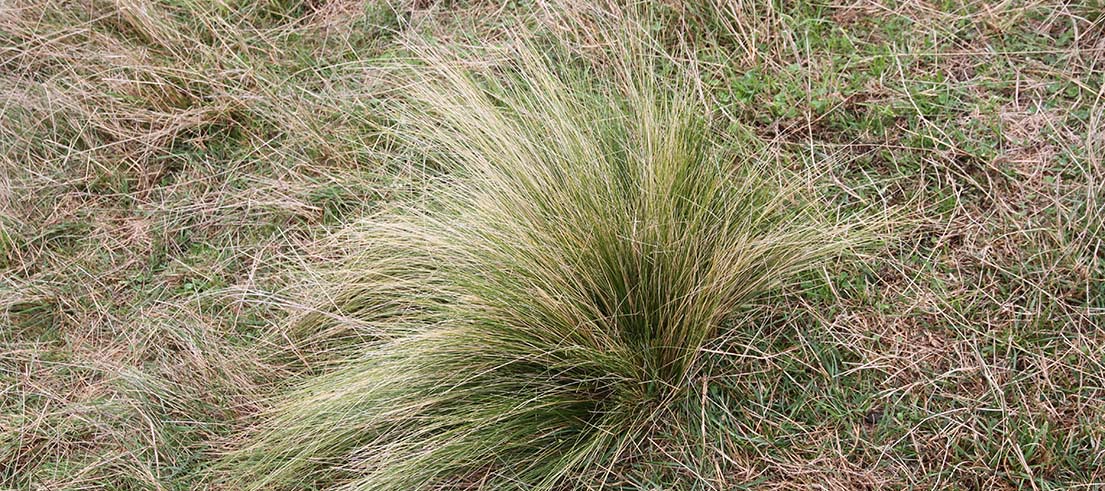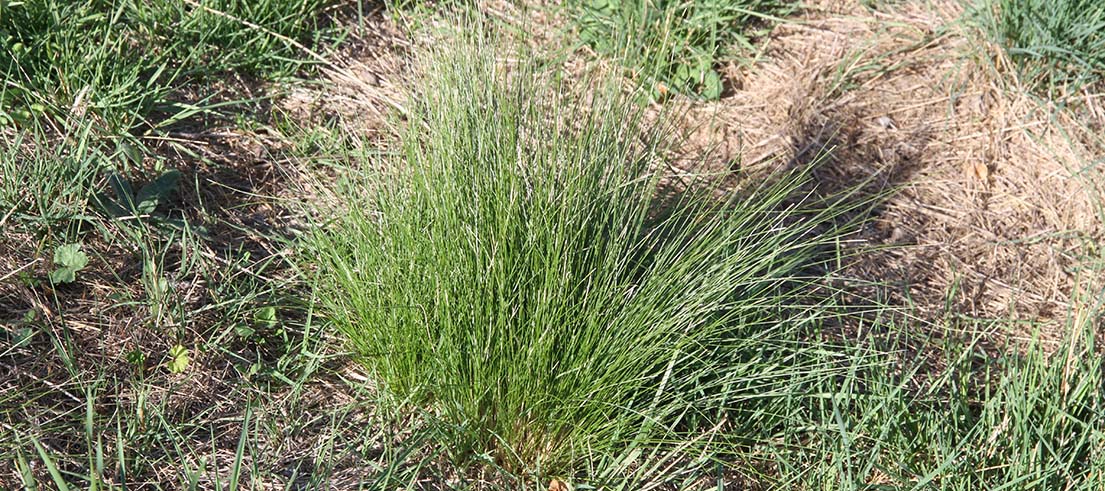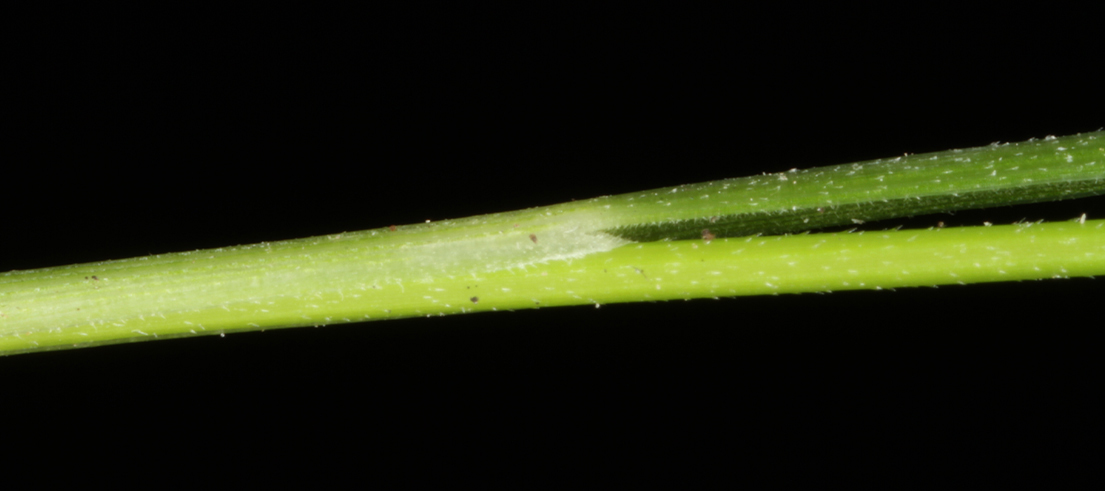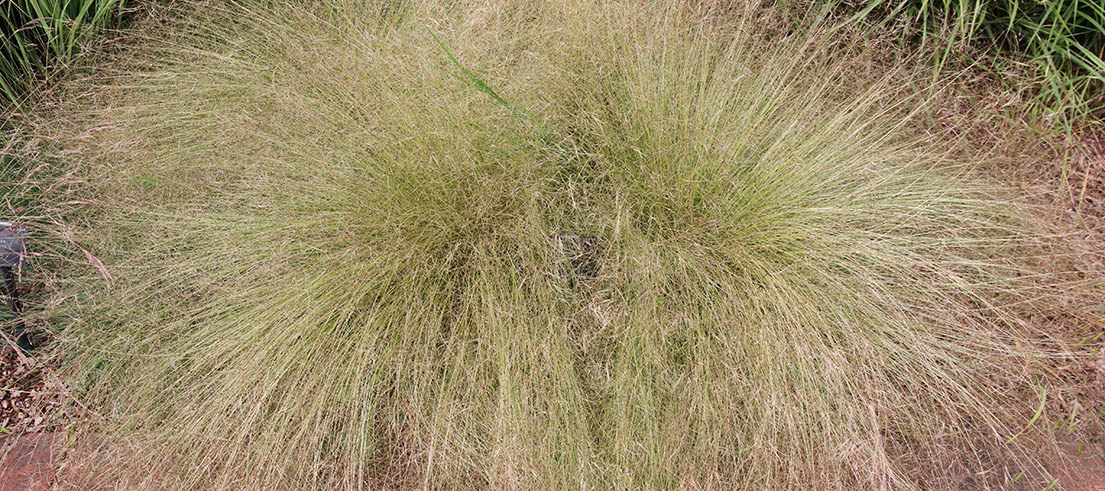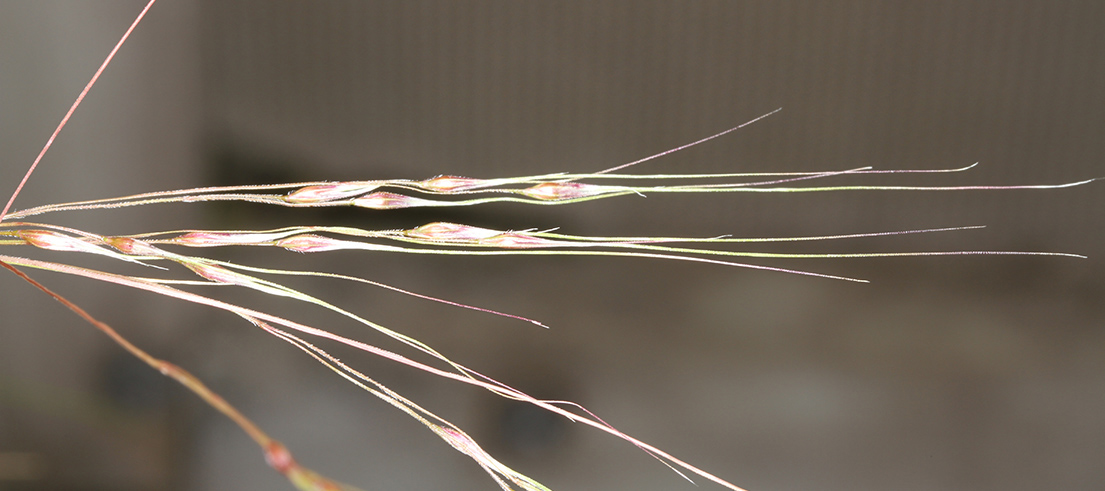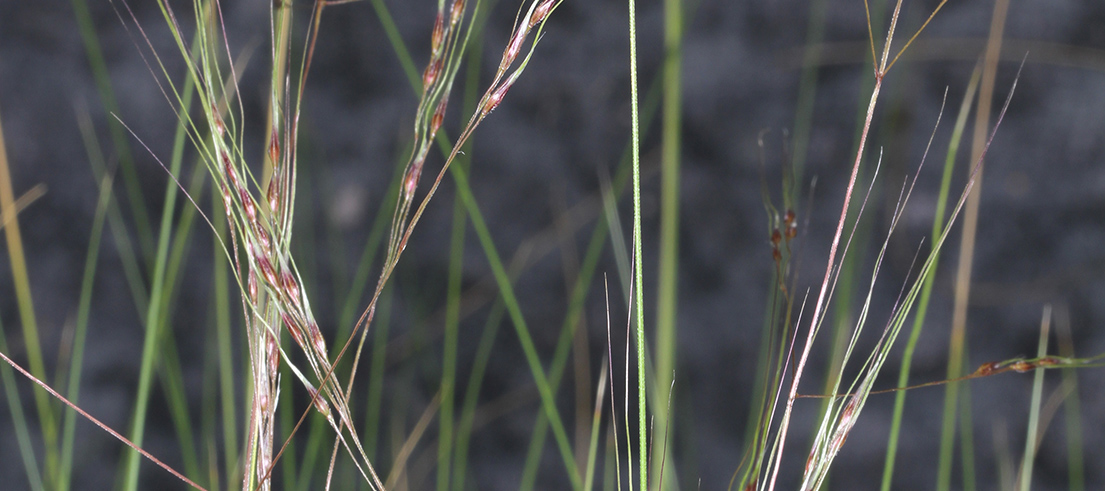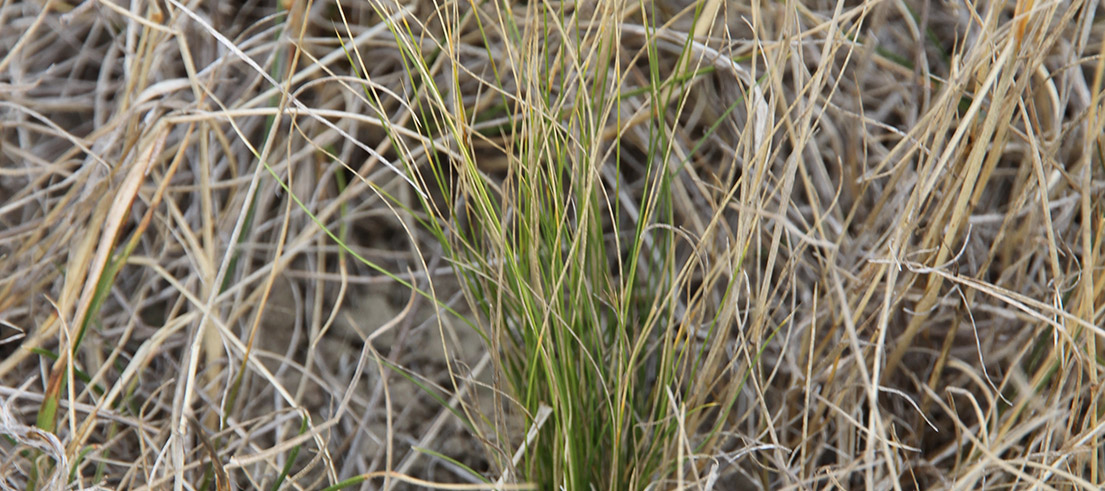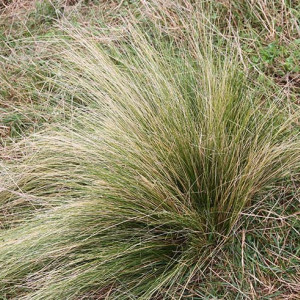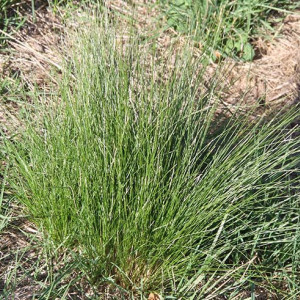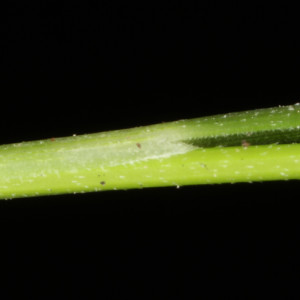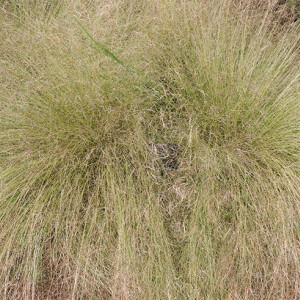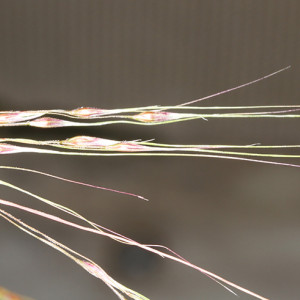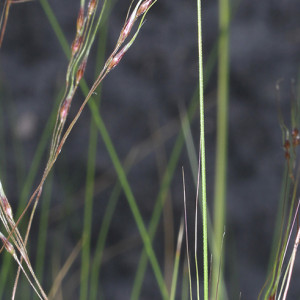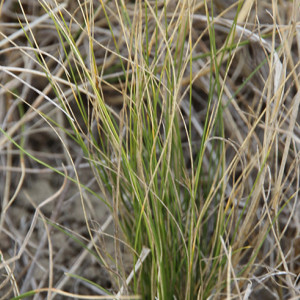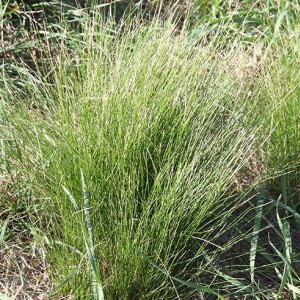A perennial tussock grass around 1m tall with fibrous roots and small, oval seeds. Nassella tussock is unpalatable to livestock and invasive in valuable pasture.
Description
- Leaves are fine and wiry, bright green, and upright in small plants, becoming duller and drooping as they mature.
- Leaves feel rough when rubbed from tip to base.
- Stem bases are swollen, hard, and look like small shallots.
- Flower/seed heads are drooping and purplish, occurring mid-spring to mid-summer.
- Seeds are purplish brown with a very long bristle at the tip.
- Seeds dispersed by wind and attachment to animal pelts. Human-mediated dispersal through contamination of clothing, footwear and machinery.
- Some land is more susceptible to nassella tussock infestation, this includes north-facing hillsides and/or free-draining soils where dry conditions or pastures open up each year. In these sites, with less competition from other pastures, nassella tussock can flourish.
What you need to know
Invasive in open habitats. Unpalatable to livestock and selective grazing may displace valuable pasture species and native plants.
Management approach
This is a declared pest managed under the Canterbury Regional Management Plan 2018 – 2038 (PDF file, 10.6MB) within the sustained control programme.
Sustained control
Pests in the sustained control programme vary greatly in their distribution across the region. Some are found in low numbers, while others are already well-established pests.
The intention of the sustained control programme is to reduce the impact on values and spread of a pest onto neighbouring properties.
We will work with affected land occupiers to meet this goal.
Rules
Canterbury land occupiers are required to control nassella tussock annually before it seeds. All nassella tussock plants need to be removed by either:
- 30 September for most properties in Waitaha/Canterbury,
- or 31 October for high-density infestations in the Hurunui district.
Control
Physical control
Digging out nassella tussock with a hand tool, or 'grubbing' is the most common removal method. You must remove all of the root system, making sure not much soil is left on the grubbed plant, otherwise, they will continue to grow and reattach to the ground.
Always carry a grubber with you to pick up any isolated plants you may come across.
Chemical control
Herbicide treatment can be an effective and efficient way to reduce dense infestations. These can be applied by hand, ground or aerial boom. Active ingredients registered for the control of nassella tussock include glyphosate (short-term knockdown) and sodium flupropanate (root-absorbed residual herbicide, currently not in production).
Caution: Always read labels and follow instructions and check your chemical application will be compliant with your regional plan/s.
Visit our nassella tussock page for all information regarding nassella tussock control.

